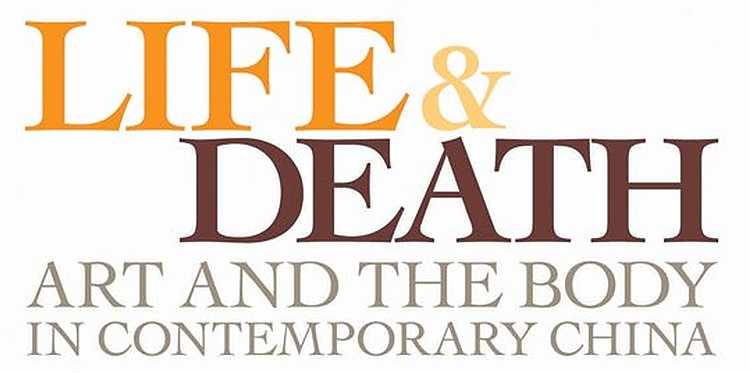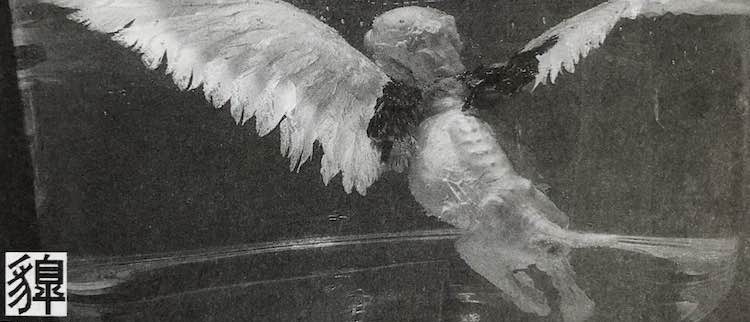
Think of a shocking or scandalous work of art. An artwork that’s provocative, controversial, or offensive. Whichever painting, photograph, or installation you have in mind, its shock value almost certainly pales in comparison with the art in Life and Death: Art and the Body in Contemporary China. Silvia Fuk’s book, published in 2013, is the first to examine the use of human remains, ashes, and blood by contemporary Chinese artists who “challenge the boundaries of art, morality and law to the extreme.” The book features rare photographs of some of these artworks, though they’re all black-and-white.
Yang Zhichao used a mould to create dice made from his own congealed blood, in a performance titled Macao (澳門). Sun Yuang and Peng Yu collected unclaimed ashes from crematoria, and mixed them with plaster to sculpt One or All (一個或所有), an architectural column. They also transfused some of their own blood into the bodies of Siamese twins, for a performance titled Link of the Body (連體). For Ruan, Xiao Yu grafted a baby’s head onto a bird’s body. (Ruan, which also appears in The Museum of Scandals, is a Chinese neologism that the artist coined to represent this chimera.)
Yang Zhichao used a mould to create dice made from his own congealed blood, in a performance titled Macao (澳門). Sun Yuang and Peng Yu collected unclaimed ashes from crematoria, and mixed them with plaster to sculpt One or All (一個或所有), an architectural column. They also transfused some of their own blood into the bodies of Siamese twins, for a performance titled Link of the Body (連體). For Ruan, Xiao Yu grafted a baby’s head onto a bird’s body. (Ruan, which also appears in The Museum of Scandals, is a Chinese neologism that the artist coined to represent this chimera.)

Zhu Yu is China’s most extreme contemporary artist. He suspended a human arm from the ceiling for his installation Pocket Theology (袖珍神学 图片; not included in Life and Death). For Intellectual Brain (全部知識學的基礎), he puréed six human brains and sold the resulting paste in jam jars labelled ‘do not eat’. Infamously, he ignored his own advice with Eating People (吃⼈), photographs of him apparently eating a foetus. Even more offensive was Sacrifice (献祭), for which he artificially inseminated a surrogate mother and seemingly fed their aborted foetus to a dog. (Did Zhu Yu use real foetuses in his work, as he claimed in the Channel 4 documentary Beijing Swings? This is difficult to verify, though Fuk takes him at face value.)
Art such as this, transgressive to the point of illegality, has very few equivalents. Perhaps the only comparative example is Rick Gibson, who was convicted of outraging public decency after exhibiting two tiny foetuses as earrings at a London gallery. Fuk doesn’t cite Gibson in Life and Death, though she does discuss other less extreme artists in relation to the Chinese works in question. Araya Rasdjarmrearnsook’s morgue videos are examined in detail, and she suggests Marc Quinn’s Self (a cast of the artist’s head made from his frozen blood) as an inspiration for Macao. Ruangsak Anuwatwimon’s sculpture Transformations, made — like One or All — from human ashes, is not included.
Art such as this, transgressive to the point of illegality, has very few equivalents. Perhaps the only comparative example is Rick Gibson, who was convicted of outraging public decency after exhibiting two tiny foetuses as earrings at a London gallery. Fuk doesn’t cite Gibson in Life and Death, though she does discuss other less extreme artists in relation to the Chinese works in question. Araya Rasdjarmrearnsook’s morgue videos are examined in detail, and she suggests Marc Quinn’s Self (a cast of the artist’s head made from his frozen blood) as an inspiration for Macao. Ruangsak Anuwatwimon’s sculpture Transformations, made — like One or All — from human ashes, is not included.


